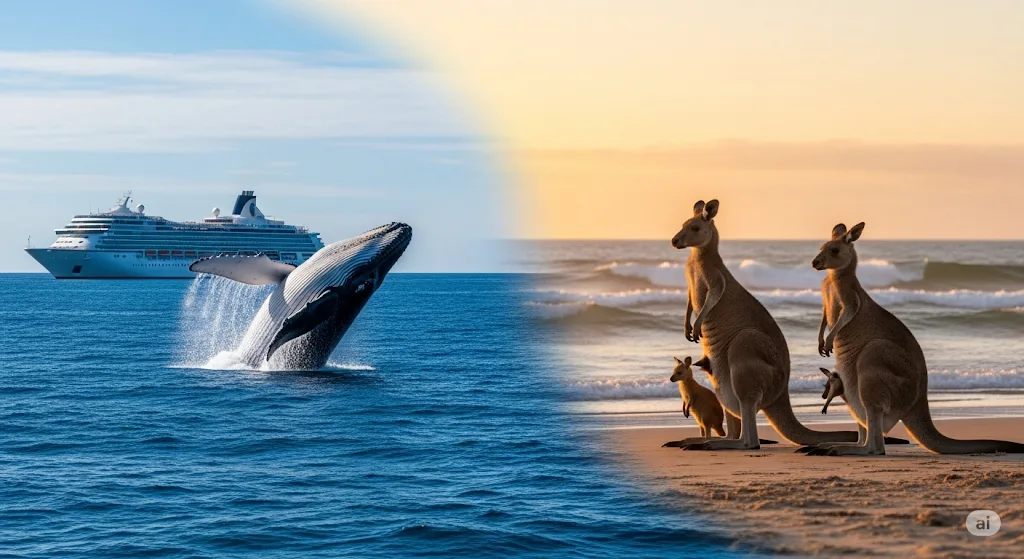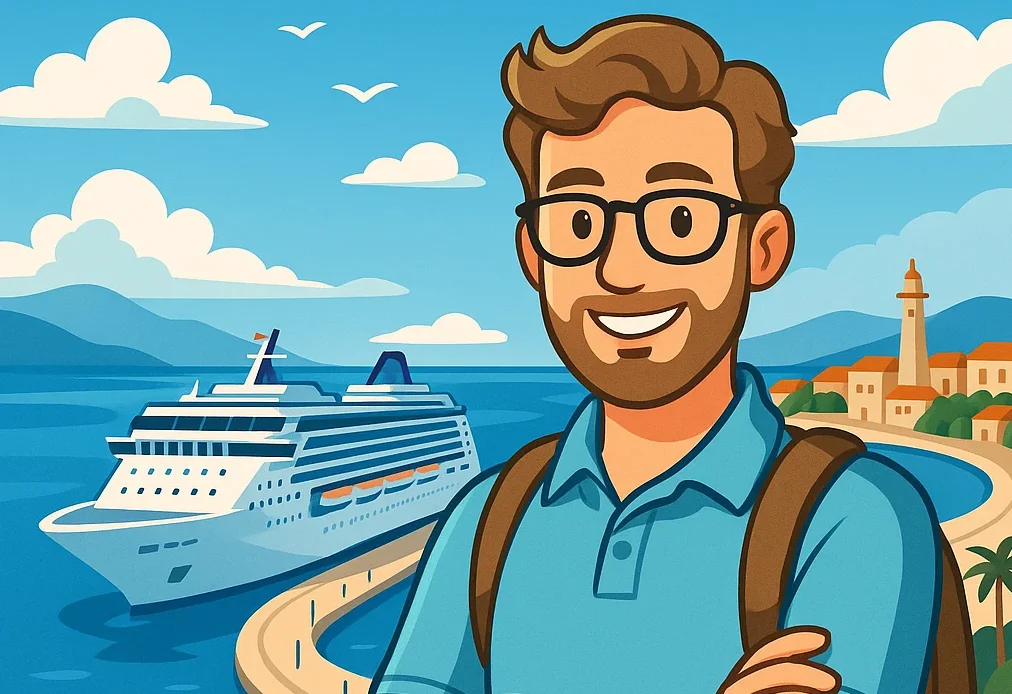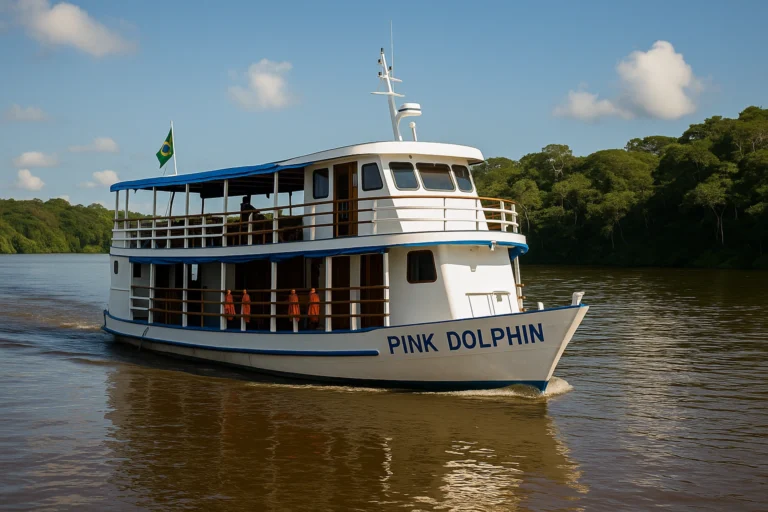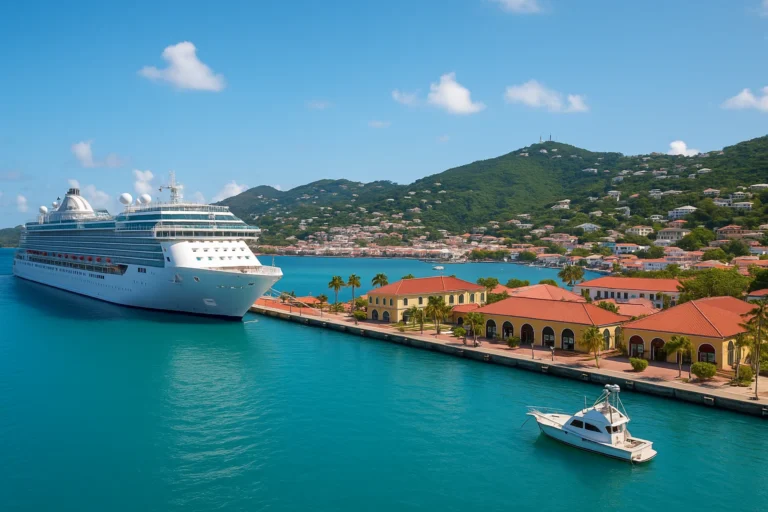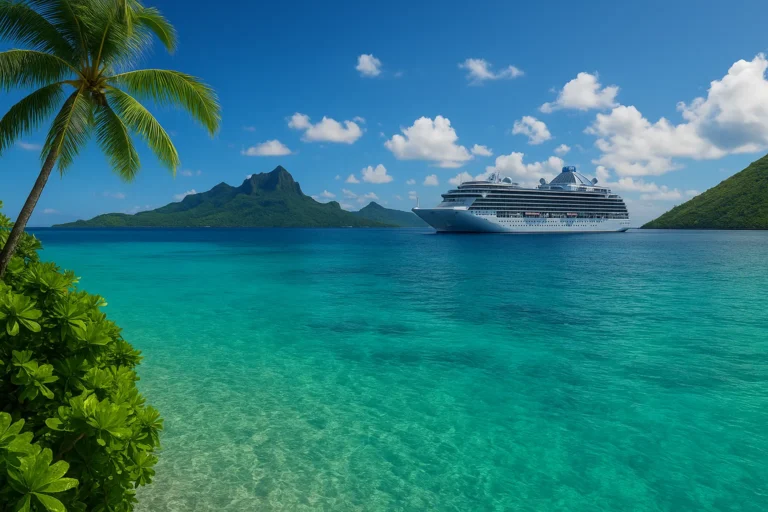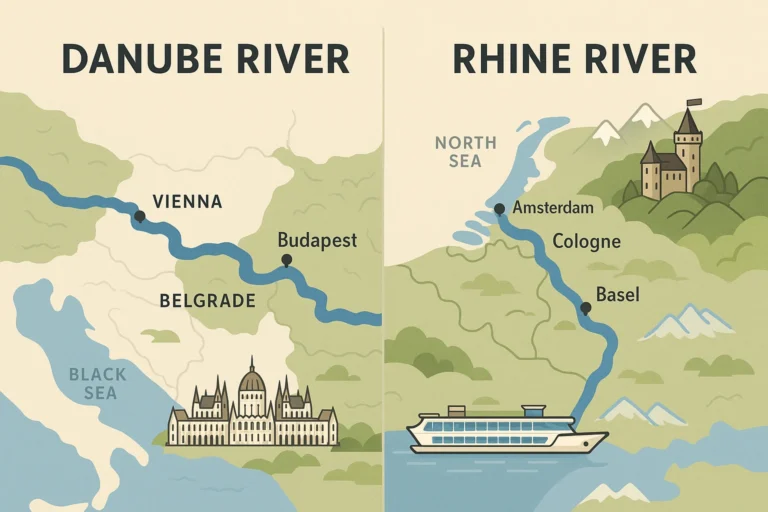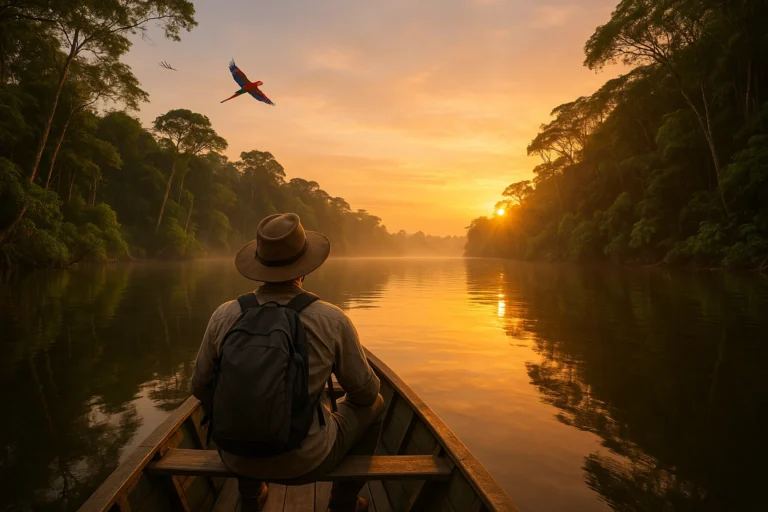How to Experience Australia’s Wildlife on a Cruise: From Whale Watching to Kangaroo Encounters
I. Majestic Marine Life: Whales, Dolphins, and the Great Barrier Reef
Australia’s oceans are home to a breathtaking array of marine life. A cruise is the ideal way to get up close and personal with these creatures, from the largest mammals on Earth to the smallest, most colorful reef inhabitants.
1. The Whale Migration Spectacle
One of the most thrilling wildlife encounters in Australia is witnessing the annual whale migration. From May to November, thousands of humpback whales travel from the cold Antarctic waters to the warmer breeding grounds along Australia’s eastern and western coasts. Cruise ships often alter their routes or offer special whale-watching excursions to get you closer to the action. You can see these magnificent creatures breach, slap their tails, and spout water in a powerful display of nature. Key viewing spots include the waters around Sydney, Moreton Bay near Brisbane, and the pristine coasts of Western Australia.
2. Discovering the Great Barrier Reef’s Ecosystem
A cruise to the Great Barrier Reef is a journey into a vibrant underwater world. This natural wonder is a living kaleidoscope of coral, fish, sea turtles, and other marine creatures. Shore excursions from ports like Cairns or Airlie Beach take you to a pontoon or a smaller vessel, where you can snorkel or dive directly into the reef’s ecosystem. For those who prefer to stay dry, glass-bottom boat tours or underwater observatories offer spectacular views of the reef’s delicate beauty. Keep an eye out for Nemo-like clownfish, giant clams, and the graceful manta rays that glide through the clear waters.
3. Playful Dolphin & Seal Encounters
Throughout Australia’s coastal waters, you’ll find pods of playful dolphins and colonies of seals. Many cruise itineraries include stops at places like Port Stephens or Kangaroo Island, where you can take a dedicated dolphin or seal watching tour. These intelligent and social animals often swim alongside the boats, putting on a show for passengers. Witnessing a pod of bottlenose dolphins jumping in the wake of your ship or seeing fur seals basking in the sun on rocky outcrops is a heartwarming and memorable experience for all ages.
II. Iconic Land Animals and Birdlife Encounters
Exploring Australia’s coastline will also bring you face-to-face with its unique terrestrial fauna, a fascinating contrast to the marine life. From the famous marsupials to vibrant birdlife, the continent is a vast, natural zoo right at your doorstep.
1. Kangaroo and Wallaby Encounters
One of the most uniquely Australian experiences is spotting a kangaroo or wallaby on a beach. In destinations like Kangaroo Island, South Australia, or the idyllic islands of the Whitsundays, you can find these marsupials in their natural habitat, often grazing peacefully near the shoreline. Many cruise shore excursions take you to dedicated parks or conservation areas where you can walk among them, taking unique photographs and observing their behavior up close. This is a far cry from a sterile zoo exhibit—it’s a genuine connection with nature.
2. Koalas in the Wild
While koalas are renowned for their slow and sleepy demeanor, seeing them in their natural habitat is a truly special moment. Cruises that call at ports such as Brisbane, Cairns, or even islands off the coast, often offer excursions to dedicated koala sanctuaries or to eucalyptus forests where these iconic animals can be seen clinging to branches. Guides provide fascinating insights into their diet, behaviors, and the conservation efforts to protect them. These encounters are a powerful reminder of Australia’s unique ecological heritage.
3. Bird Watching and Exotic Species
Australia is a birder’s paradise. The country’s coastline and islands are home to a stunning variety of exotic birds, from colorful parrots and cockatoos to graceful pelicans. Excursions may take you to protected bird sanctuaries where you can witness thousands of seabirds nesting. A popular shore excursion from Melbourne is to Phillip Island, home to the famous Penguin Parade, where thousands of little penguins return to their burrows at sunset. It’s a spectacular natural phenomenon and a must-do for any bird lover.
III. Practical Tips and Planning Your Wildlife Cruise
To maximize your chances of seeing Australia’s incredible wildlife, a little preparation goes a long way. Thoughtful planning can transform a good cruise into a truly unforgettable wildlife expedition.
1. Choosing the Right Itinerary
Not all Australian cruises are created equal when it comes to wildlife spotting. For marine life, look for itineraries that focus on the East Coast, with stops in Cairns for the Great Barrier Reef and Sydney or Brisbane for whale watching. If you’re keen on seeing kangaroos and koalas, choose a cruise that includes Kangaroo Island in South Australia or the port of Melbourne, which provides easy access to Phillip Island. Researching shore excursions in advance is key to ensuring your desired wildlife encounters are a part of your trip.
2. Best Time of Year for Wildlife Spotting
The ideal time to cruise Australia for wildlife depends on your target species. The primary whale watching season runs from May to November, with peak sightings typically in July and August. The best time to visit the Great Barrier Reef is during the Australian dry season, from June to October, when the weather is sunny and the water visibility is excellent. Koala and kangaroo sightings are possible year-round, but spring (September to November) is a particularly wonderful time as new life emerges and the weather is pleasant.
📂 Explore More in These Categories
Best Cruise Destinations in 2025: Caribbean, Europe & Bucket List Ports
3. Essential Gear and Responsible Tourism
Packing smart is crucial. Don’t forget essentials like binoculars for spotting wildlife from the ship’s deck, a good camera with a zoom lens, and comfortable walking shoes for shore excursions. Sunscreen, a hat, and sunglasses are non-negotiable due to the strong Australian sun. Most importantly, practice responsible tourism. Always follow the instructions of your guides, maintain a safe distance from wildlife, and never touch or feed the animals. By respecting their habitat, you contribute to the conservation of these magnificent creatures for generations to come.
❓ Frequently Asked Questions
1. Is it safe to be close to whales and other large marine animals?
Yes, strict regulations are in place to ensure the safety of both passengers and marine life. Boats maintain a safe, regulated distance from whales, dolphins, and other animals. These guidelines protect the animals from stress and protect you from any potential hazards.
2. What should I do if I see an animal from the ship?
Grab your binoculars and camera! Find a spot on the deck and enjoy the moment. If you’re on a wildlife-focused cruise, the crew will often make announcements and point out sightings to ensure everyone gets a chance to see them. Please avoid making loud noises or trying to attract the animal’s attention.
3. Are all shore excursions for wildlife included in the cruise fare?
Typically, the cruise fare covers your accommodation, meals, and on-board entertainment. Shore excursions, especially those focused on specific wildlife encounters like swimming with dolphins or dedicated whale watching tours, are usually an additional cost. It is best to check with your cruise line and book these in advance to secure your spot.
💡 Did You Know?
Australia is home to the world’s largest population of wild camels. They were originally imported in the 19th century as a means of transport and are now considered a feral pest in some parts of the country, with over a million roaming free in the Outback.
📣 Have you been on a wildlife cruise in Australia? What was your favorite encounter? Share your stories in the comments! 💬


